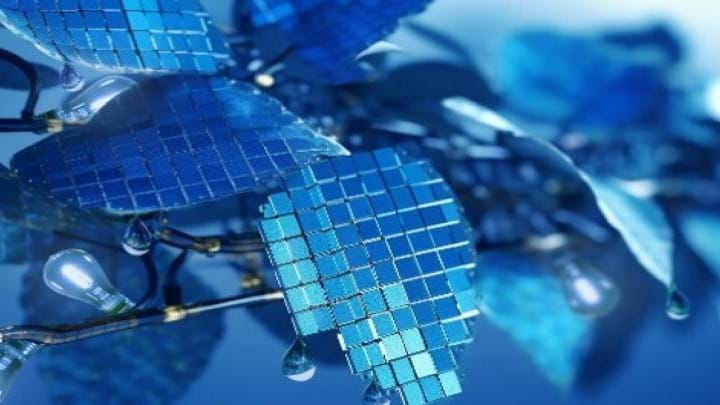Chemical engineers create bio-inspired leaf that generates more power than conventional solar panels

A NEW photovoltaic leaf (PV-leaf) technology by chemical engineers at Imperial College London could pave the way for future renewable energy technologies by lowering costs and generating 14% more electricity compared to conventional solar panels.
The problem with conventional solar panels is that typically, only 10–25% of the incident solar energy captured by a PV panel is converted into electricity. The rest of the electrically unusable solar energy dissipates as waste heat in PV cells. As a result, this causes an increase in their operating temperature which, if PV cells exceed 65°C, leads to a significant decrease in electrical efficiency.
Cooling the panels without the need for complicated heat exchangers, membranes, pumps, and control systems, would be one way to help counteract the loss in efficiency.
Taking a leaf out of nature’s book, a team at Imperial College London have found a way to do that by mimicking the movement of water through veins in a plant leaf.
In nature, plants send water from the soil up to their leaves through various tubular structures. The flow of water is driven by natural capillary forces and osmotic pressure which then distribute the water through the structure so it can evaporate on the leaf surface – a process known as transpiration.
The team’s technology emulates this transpiration system but in a way that can be used with solar cells.
Known as a PV-leaf, the device is made up of a biomimetic transpiration (BT) layer that contains bundles of bamboo fibres and packed hydrogel cells.
This 1 mm-thick layer of fibres is sandwiched between a steel wire mesh on the base, and a 10 cm x 10 cm solar cell on the top. The root of the fibre bundles is then soaked in a water tank.
These bamboo fibre bundles act as veins, siphoning water up from the tank to the hydrogel, which soak it up and spread it all over the underside of the solar cells. As the water evaporates, it draws heat away from the solar cell, allowing the leaf panels to cool themselves down without using any energy. The water is not lost, however, as the water vapour makes its way to a collection chamber made of 3 mm-thick polycarbonate plates stored under the system.
In their research paper, the team showed that the design of the PV-leaf’s transpiration system is capable of removing 75% of the heat. Along with significantly decreasing the operating temperature by ~26 °C relative to a standalone PV cell, it leads to an improvement of its electricity output by ~14%.
As a bonus, the PV-leaf is also capable of using a saline solution as a coolant instead of water, making it attractive to areas facing a shortage of freshwater. And because the BT layer is made from widely available, affordable, and environmentally friendly materials, it should be relatively easy to mass manufacture and to compete with established technologies. “Given current predictions for the global PV capacity to reach over 22 TW by 2050, and assuming that 30% of the PV panels have access to water resources as coolant, PV-leaf designs promise to generate an additional ~650 GW of power globally, which is close to the current global PV installed capacity,” the researchers add.
Gan Huang, honorary research fellow in the department of chemical engineering at Imperial, and author of the study said: “This innovative design holds tremendous potential for significantly enhancing the performance of solar panels, while also ensuring cost-effectiveness and practicality.”
Recent Editions
Catch up on the latest news, views and jobs from The Chemical Engineer. Below are the four latest issues. View a wider selection of the archive from within the Magazine section of this site.




